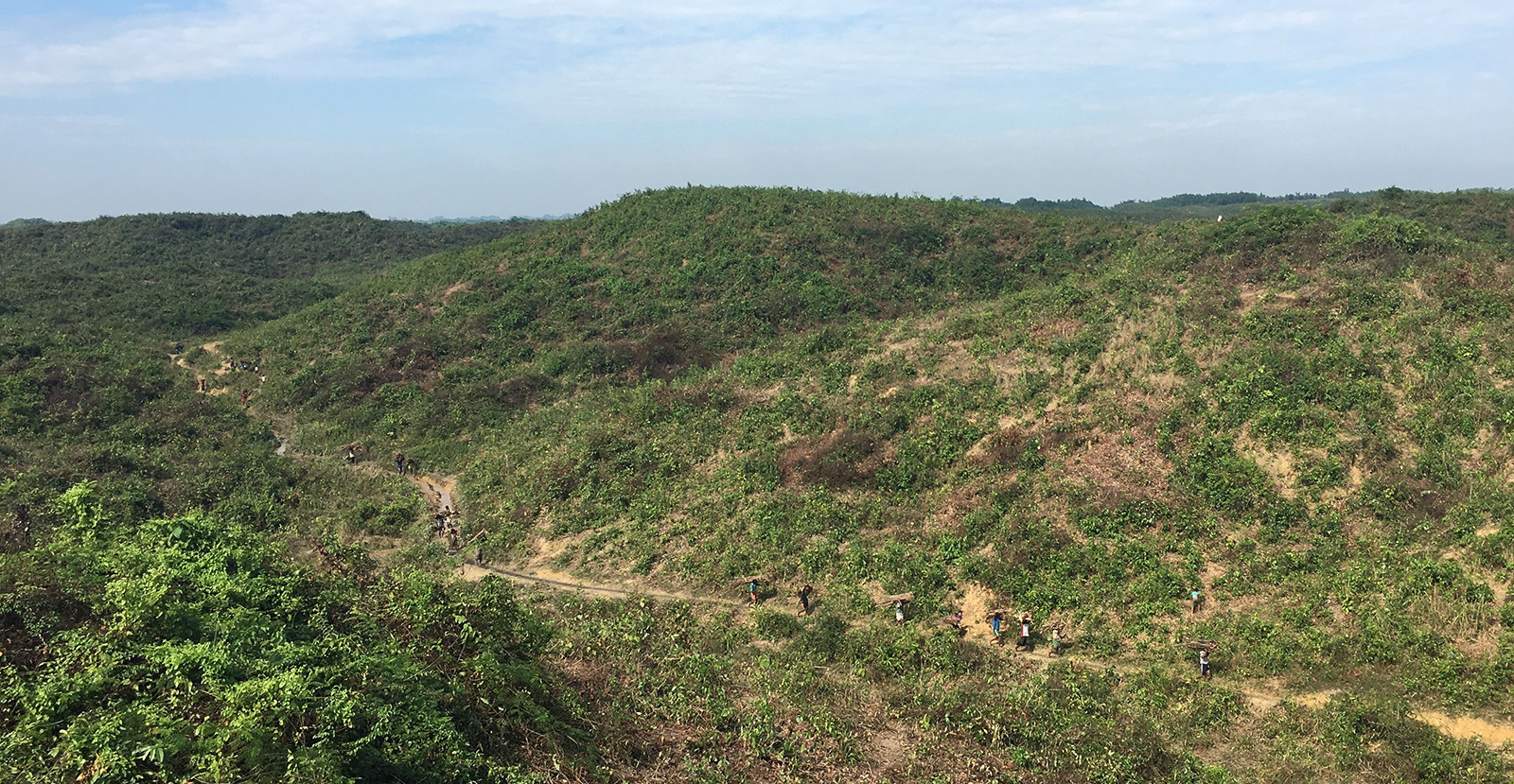Through many years of experience and country examples, we have learned that data on forest ecosystems is crucial for forest-related decision-making at the local and national level. National Forest Monitoring Systems (NFMS) are important for countries to be able to monitor and report on national goals and international targets, such as carbon and biomass in forests.
These systems are increasingly used to collect data to identify and address national priorities, including migration and the use of natural resources surrounding the camps of refugees and internally displaced persons (IDPs). One of the recent examples of NFMS’ multipurpose character is the contribution to the Safe Access to Fuel and Energy (SAFE) initiative, which is supporting a dozen of countries in making and monitoring policies to better address energy needs and build resilience during emergencies.
This shows how data on forest and biomass can have a wide range of direct applications beyond forestry in the strict sense of the word, and how widely-used NFM systems can be. In the case of SAFE applications, the use of the NFM tools and remote sensing (RS) is highly relevant and often of direct impact for a wide range of people in terms of both their personal security and food security, since the data generated is used as input for policy and decision makers in emergency situations.
Forest resources key to supporting refugees
Globally, nearly three billion people rely on traditional biomass, such as fuelwood, charcoal or animal waste, as sources of fuel for cooking and heating. Oftentimes, these are vulnerable populations – including refugees, IDPs, and the communities hosting them. They live in overflowing camps with increasingly scarce natural resources and often struggle to meet their basic needs. About 80 per cent of the displaced rely on traditional biomass fuels such as fuelwood and charcoal for cooking and heating.
In order to address people’s energy needs during emergencies and prolonged crises, and to build resilient livelihoods, the Safe Access to Fuel and Energy (SAFE) initiative is promoting the combination of energy-efficient technologies and practices and alternative energy sources.
NFM techniques are being used to analyze and plan forest resources to ensure an accurate estimation of the sustainable supply of energy through mapping and assessing potential sources of fuel, and they are also a support tool for sustainable natural resource management. Well-planned data-driven forestry interventions not only support countries in their REDD+ and NDC efforts, but they also ensure a sustainable supply of wood fuel, timber and non-wood forest products helping to build resilience and enable sustainable development in both refugee and host communities.
Here are some examples:
In Uganda, using satellite imagery and field data collection, FAO and UNHCR assessed the supply and demand of fuelwood in 14 refugee settlements. In the largest of them, Bidi Bidi, the study estimated that the current refugee population consumes such an amount of fuelwood each year for cooking and heating that, if no action is taken, the aboveground biomass currently available in the camp would be exhausted within three years. With this data, forestry interventions can be planned that can help to improve the sustainability of the camp beyond this date.
In Cox’s Bazar, Bangladesh, SAFE provides immediate support to address the cooking fuel crisis due to the displacement of Rohingya refugees. The remote sensing work – which uses the existing geospatial layers into a GIS decision support system – enabled the detection of suitable land for refugee allocation, as well as supporting land stabilisation and the reforestation efforts of the Bangladesh Forest Department.
In northeast Nigeria, NFM technologies are supporting the enhancement of the resilience of crisis-affected populations. Improved energy access and land rehabilitation are one of the pillars of this approach. FAO is assessing gaps in woodfuel supply and demand. The assessment also serves as the basis for developing further scenarios for the sustainable use of existing resources.
What’s next?
SAFE has gained momentum in recent years, due in part to the increased recognition of the importance of energy issues for crisis-affected populations. This issue is becoming a high priority in the field, and is also reflected in major global policy processes, including the 2030 Agenda for Sustainable Development.
The initiative is expanding its support to other countries. Niger is one of the countries currently receiving support that includes mapping of the plant cover and forest resources in a buffer zone around camps and spontaneous IDP and refugee sites in the Diffa zone and oasis pools. In various camps, a combination of interventions will be needed to reduce the high woodfuel demand. NFM technologies will again play a crucial role in the woodfuel assessment process.
To conclude, the development of user-friendly tools to address these planning and woodfuel/biomass issues in the context of migration and refugees is crucial. The technical work done across FAO departments includes the further development of straightforward processing chains for the use of high-resolution satellite data. In the case of emergencies, the need for quick and accurate actions on the ground guided by studies using NFM tools and available remote sensing data can allow aid workers and decision makers to gain precious time to make the right decisions.

Useful links:



